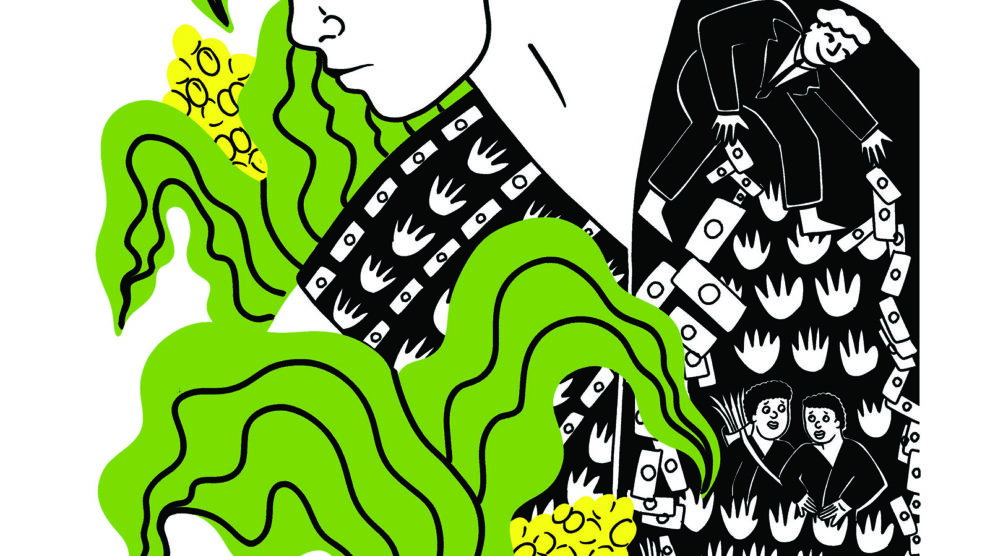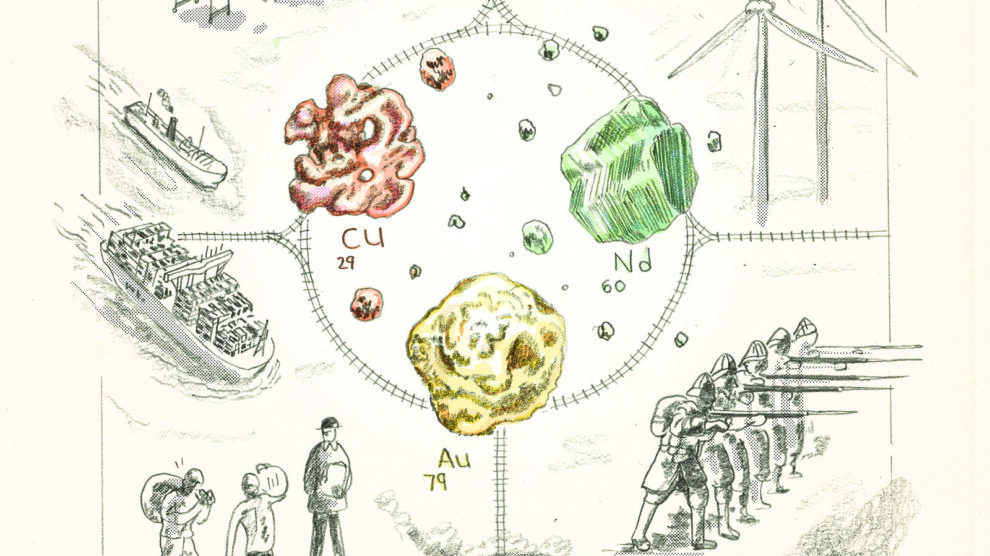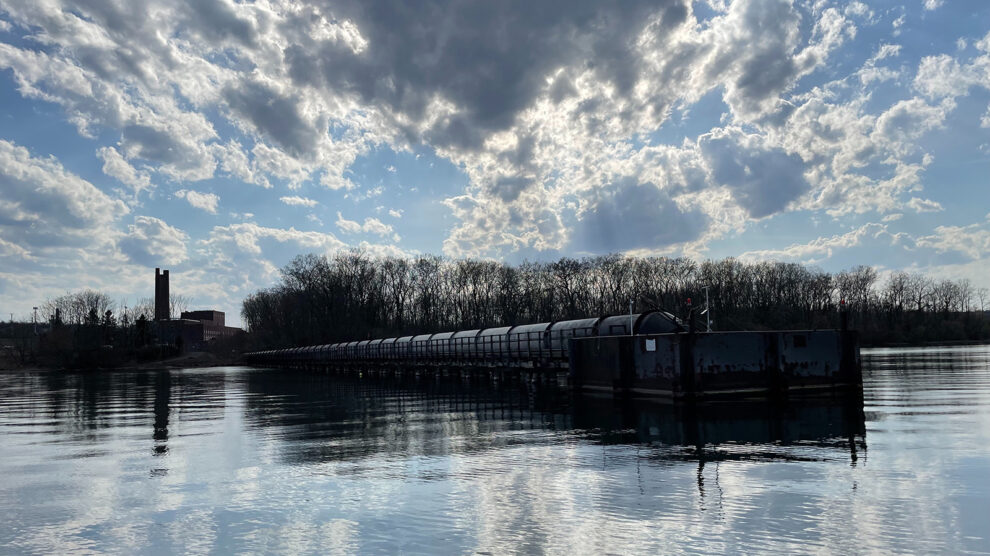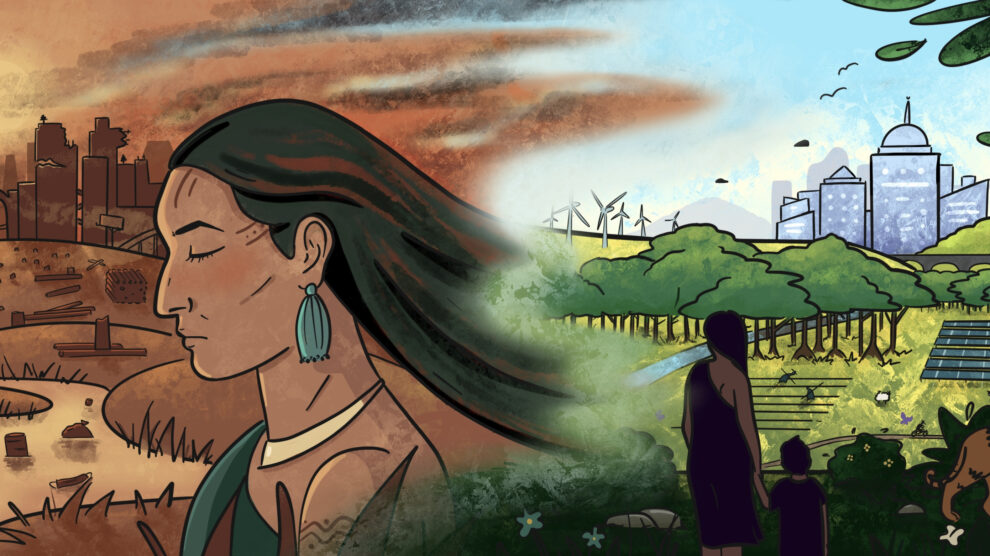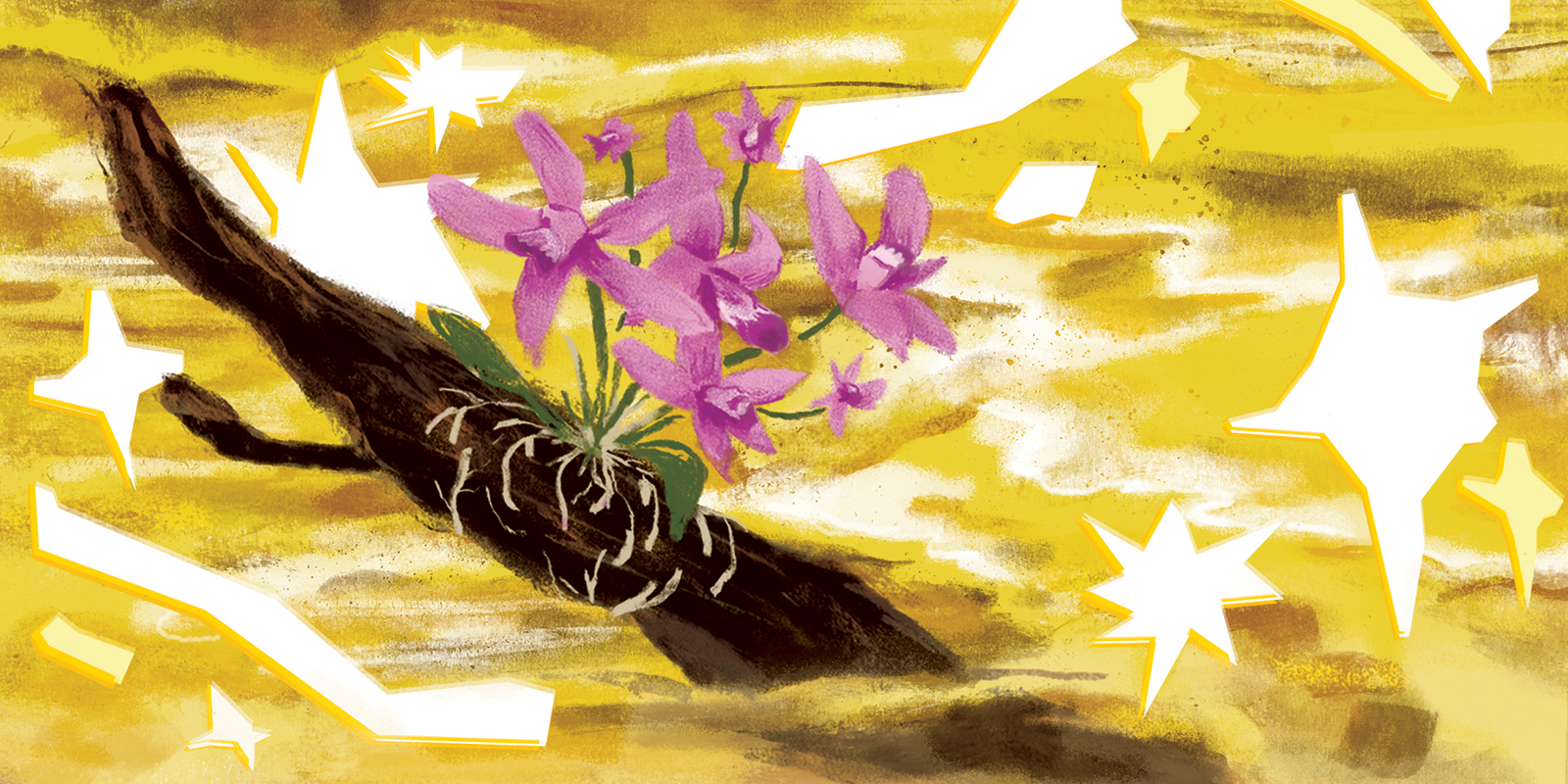
A Flower in the Mud
How Life Resists the Gold Rush Wave in Ecuador
By Andrea Jazmín González Arias
Volume 25, no. 2, Bleeding Earth
We live in a capitalist system that has taught us to see nature as a profitable resource. The Amazonia as a territory has borne devastating effects since capitalism’s early origins. The list is long: rubber exploitation, deforestation, intensive farming, oil extraction, sewage discharge, leachate deposits. How do we balance the world that we have created with the immanent life on the planet that houses us? How can we leave the legacy of a habitable planet to future generations? In a post-pandemic global context, with the effects of climate change already affecting people’s lives around the world, and economical and political systems worsening inequality, humanity is facing a crisis in its evolution. This article aims to describe the most recent phenomenon of gold mining that is affecting Ecuador and its Amazonia, and how this problem is pushing our society to take conscious actions to start moving towards a paradigm shift, from viewing nature as a product, to nature as a being.
The Ecuadorian Context
In 2008, Ecuador challenged the preconceived notion of development by incorporating into its National Constitution the principle of Sumak Kawsay. This principle comes from the Indigenous cosmovision of the Andes and the Amazonia, and refers to a way of living in harmony with the self, the others, and the environment. Its inclusion in the Ecuadorian Constitution marked a historical achievement for the Indigenous movement and the social process of cultural revindication.1 Within the framework of the Sumak Kawsay, Nature or Pachamama is essential for life to occur and be sustained. With this perspective, the 2008 Ecuadorian Constitution recognized nature as a subject with rights, stating, “Nature or Pachamama has the right to exist, persist, maintain and regenerate its vital cycles, structure, functions and its evolutionary processes.”2
Ecuador became the first country in the world to recognize the Rights of Nature.3 This was possible because diverse ideologies converged and created a historical revolutionary momentum. The Constitutional declaration reflects the hopes and dreams of dignity of the Ecuadorian people. However, the government policies have not fully aligned to this declaration and continued to dismiss the Rights of Nature for the benefit of private investment. The last decade in Ecuador had been marked by an increase in territorial concession to mining activity, reaching a peak in the last five years with an average of four thousand new concessions from the government.4 Most of these concessions were approved without prior, free, and informed consent of the people that live in those territories, even though the consent was required not only by the Constitution but also by the United Nations Declaration on the Rights of Indigenous Peoples.
Legal vs. Illegal
While there is still a debate about the legal process of mining in the conceded territories, an unprecedented phenomenon has exploded in the country: illicit gold extraction. This refers to the extensive, unregulated mining activity by organized criminal networks that could establish smuggling routes for explosives, mercury, cyanide, weapons, the extracted gold, as well as create networks for money laundering operations.5 This wave of criminal activity reached Napo at the end of 2021.
Privileged with an abundance of water in forms of rivers, waterfalls, and underground currents, Napo is an Amazon province located in the Northeast of the Ecuadorian Andes. Gold extraction is not an uncommon activity among locals. Traditionally, native people practice ancestral mining alongside the rivers using “bateas,” which are oval wooden tools for making continuous washes to the sediments until the gold sheets accumulate and settle at the bottom of the river. For generations, Napo’s Kichwa communities had used this kind of mining as supplemental income. This activity is part of the cultural tradition and recognized and protected by the national law.6
One of the regions in Napo most affected by illegal mining is Yutzupino, located within Confluencia—concession territory of 1,100 hectares loaned to the Chinese company Terraearth Resources.7 The government’s concession process arbitrarily takes away the community’s control over its own territory. At the same time, mining activity is portrayed as an opportunity for economic development. Amidst confusion from community members and uncertainty about the territorial encroachment, the door to illicit activity has been opened.8
The presence of non-authorized backhoes operating in Yutzupino was first reported in October 2021, at which point the affected area was less than one hectare. By January 2022, the devastation had reached seventy hectares.9 The exponential growth of illegal activity can only be explained by the creation of an organized network with machinery and resources—of which the authorities are complicit in—and the participation of common citizens. During those days, everybody was talking about the gold business. Mining attracted people from other provinces and neighboring countries, the majority of whom were subjected to inhumane conditions. There are reports of people who died, buried under piles of stones removed from the river during long mining nights. The river’s ecology was also affected: scientists reported high levels of mercury in the water and low levels of macroinvertebrates—evidence for the death of one side of the river.10 Finally, due to the pressure generated by Indigenous, environmental and human rights collectives, the national government was compelled to intervene and stop the illegal operations in Yutzupino; hundreds of backhoe loaders were seized during the operation, including one belonging to a local municipality. Despite intervention, no one had been prosecuted for these crimes.
Opinions are polarized within the populace of Yutzupino, however. Some defend illegal mining for its potential of bringing employment; the government promotes legalizing concessions; others fear the influx of large-scale gold mining will cause environmental destruction in the absence of adequate regulations. For those who oppose all mining activity, legal or illegal, the defense of the rivers is the leitmotiv of their demands.
Life Still Flowers
Yutzupino is not an isolated event in Ecuador; illegal mineral exploitation occurs throughout the country. Despite the devastating effects of mining on nature and people’s lives, in August 2021, the Ecuadorian government issued Executive Decree 151 that strengthened mining policy in order to increase investment. In other words, the government intends to place the interests of national and transnational companies above human and nature’s rights recognized by the Constitution.11 In June 2022, the Ecuadorian Confederation of Indigenous Nationalities (Confederación de Nacionalidades Indígenas del Ecuador-CONAIE), along with peasant, social, and student organizations, convened a nationwide mobilization and listed ten key demands for basic life rights. One of these demands was to stop the expansion of the extractive mining frontier.12 After eighteen days of protests marked by violent police repression, an agreement was reached to stop new mining projects on Indigenous lands, protected areas, archaeological zones, and areas with important water sources. This is a valuable win, but territory defenders are aware that this is just one step forward in a long path of resistance.
The heart and spirit that led Ecuadorians to acknowledge nature as a being that deserved its rights are still leading the actions aimed to protect the richness of our biodiversity. Resistance takes multiple forms; the organization based on popular democracy, the creation of women’s organizations defending their territory, or the appeal to international law that protects Indigenous people’s and nature’s rights. There is a garden of resistance flowering in Ecuador alongside the threat.
Notes
- Ana del Rosario Padilla Oquendo, Emilio Moyano Díaz, and José Padilla Villacís, “El Camino Del Sumak Kawsay Hacia La Constitución Del Ecuador Del 2008: El Rol Del Movimiento Indígena,” Estado & Comunes, Revista de Políticas y Problemas Públicos 2, no. 5 (July 15, 2017), https://doi.org/10.37228/estado_comunes.v2.n5.2017.54.
- Constitución del Ecuador, Article 71.
- María Valeria Berros, “The Constitution of the Republic of Ecuador: Pachamama Has Rights,” Environment & Society, Arcadia, no. 11 (June 2015), https://doi.org/10.5282/RCC/7131.
- Daniela Aguilar, “Concesiones mineras en zonas sensibles de Ecuador no se detienen,” Mongabay, August 15, 2018, https://es.mongabay.com/2018/08/concesiones-mineras-en-ecuador-areas-protegidas/.
- Organization of American States, Tras El Dinero Del Oro Ilícito: Fortalecimiento de La Lucha Contra Las Finanzas de La Minería Ilegal. El Caso Ecuador (Documentos oficiales: Diciembre 2021), https://www.oas.org/es/sms/ddot/docs/Tras-el-dinero-del-oro-ilicito-El-caso-de-Ecuador.pdf.
- Ana Cristina Alvarado, “Ecuador: la minería ilegal está acabando con dos ríos de la provincia de Napo,” Mongabay, February 17, 2022, https://es.mongabay.com/2022/02/ecuador-la-mineria-ilegal-esta-acabando-con-dos-rios-de-napo/.
- Wilmer Torres, “Hay minería ilegal en seis parroquias del cantón amazónico de Tena,” Primicias (blog), February 15, 2022, https://www.primicias.ec/noticias/economia/mineria-ilegal-napo-tena-operativos-ecuador/.
- Franklin Soria, “La minería ilegal tiene corona en el Ecuador,” Plan V, January 6, 2021, https://www.planv.com.ec/historias/sociedad/la-mineria-ilegal-tiene-corona-el-ecuador.
- Alvarado, “Ecuador.”
- Alvarado, “Ecuador.”
- “Decreto Ejecutivo 151: Tabla de salvación para las empresas mineras,” Acción Ecológica (blog), August 9, 2021, https://www.accionecologica.org/decreto-ejecutivo-151tabla-de-salvacion-para-las-empresas-mineras/.
- conaie, “Demandas de la movilización nacional, popular y plurinacional,” Confederación de Nacionalidades Indígenas del Ecuador, June 20, 2022, https://conaie.org/2022/06/20/demandas-de-la-movilizacion-nacional-popular-y-plurinacional/.


